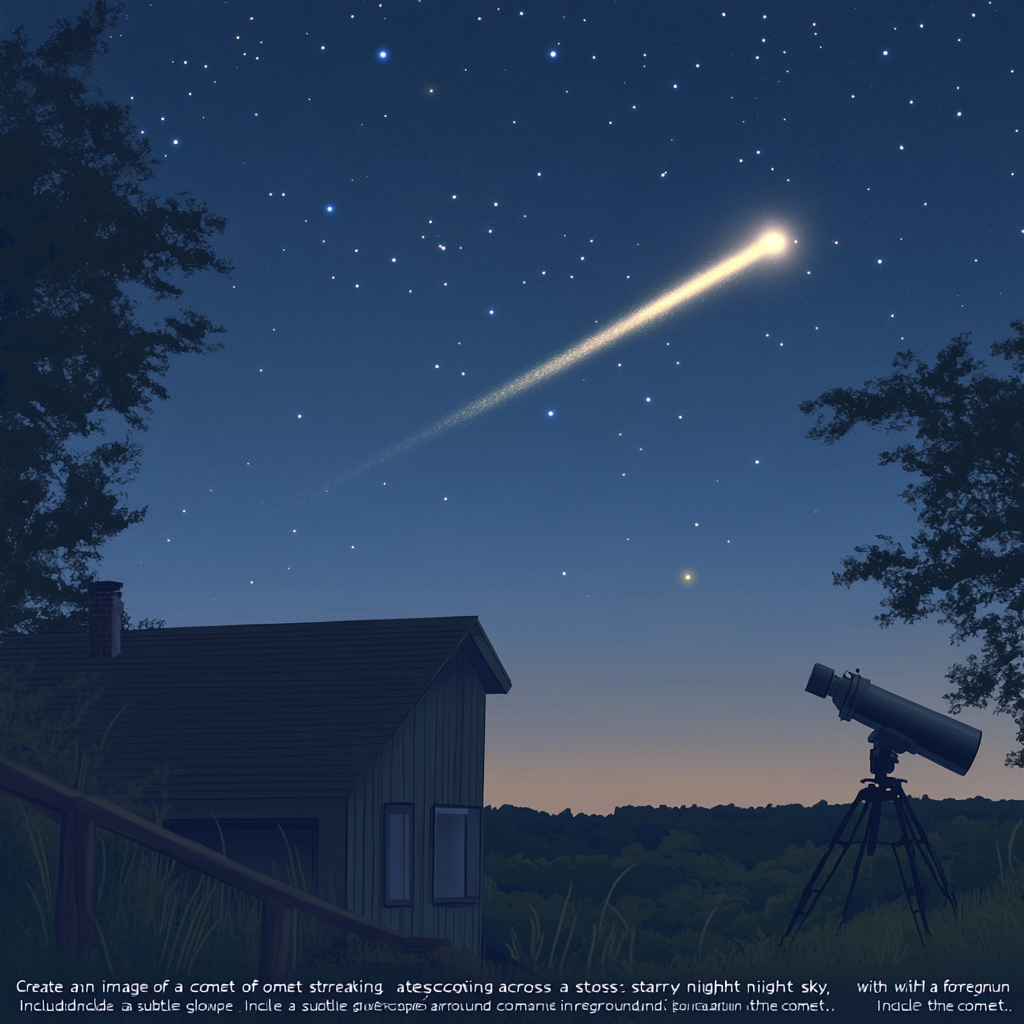
Celestial Expectations Fade with Disappearance of Promising Comet
As the narrative of night unfolds, a little comet named Tsuchinshan-ATLAS pirouettes across the firmament, dazzling us with its ephemeral beauty. But hold your horses! Weren’t we expecting an autumn spectacle complete with another comet to weave its magic across the October sky? Well, it seems the comet gods have chosen to throw a wet blanket over our expectations, leaving us with a sigh instead of a swoon. Let’s unravel this cosmic tale and see what the universe has in store for us…and what it doesn’t.
Let’s set the scene. It was September 27 when the cosmic scouts over in Hawaii, under the auspices of the Asteroid Terrestrial-impact Last Alert System (ATLAS), discovered the comet initially tagged as "A11bP7I." This little cosmic wanderer quickly strutted into our collective consciousness as a member of the illustrious Kreutz family—think of them as a celestial family with some bling, known for delivering some of the most glittering comets in the annals of astronomy.
Picture this: the Kreutz family is not just any assemblage of comets; they have a history steeped in brightness. Look back to the famed Great Comet of 1965, Ikeya-Seki, a shining star in this clan who graced us with a spectacle that still twinkles in our memories. Alas, however, there are those in this family who’ve met a tragic fate. Many Kreutz comets disintegrate or fragment as they dive close to the Sun, leaving behind remnants that fade into the darkness—a bit of a cosmic tragedy, wouldn’t you say?
Fast forward to the present, and we meet Comet ATLAS, who appears to be struggling to pull off the stellar performance we all anticipated. Instead of shimmering brightly, it seems to be cloaked in dullness, resisting the cosmic spotlight like a reluctant prom date. Current observations show that it remains languishing at a faint magnitude of around 12 or 13, which is far less than the once-hopeful predictions of a dazzling -4.5 brightness. You know, that kind of brightness that could rival Venus! Remember those bright-eyed dreams? They’ve been eclipsed by reality.
Now, take a step back and consider the plight of its nucleus. News came rushing in that it has split into two flakes of cometary distress. This kind of dramatic disassembly is, unfortunately, par for the course when it comes to Kreutz comets. John E. Bortle, a sage in the world of amateur astronomy who has laid eyes on over 300 comets, suggests that the odds are stacked against Comet ATLAS. He warns that its faint glow isn’t a promising sign for survival as it reaches its closest point to the Sun. Essentially, the whispering winds of fate seem against it.
Meanwhile, Comet Tsuchinshan-ATLAS is out there winking at night sky enthusiasts, holding onto the limelight longer than its struggling sibling. Currently visible and expected to hit its peak brightness in mid-October, it’s still putting on quite a show. Thanks to its steady performance, Tsuchinshan-ATLAS is a delightful splendor in the observatory palette. No signs of a breakup here—yet. Stargazers wielding binoculars and small telescopes can still catch sight of it, a true star amid the gloom of encroaching clouds of disappointment.
For those excited about catching a glimpse of this celestial beauty, let’s get practical. Here are some tips that may elevate your night sky experience into something more than just glancing wishfully at the stars:
-
Location matters: Whether you hail from the Northern or Southern Hemisphere, this comet is not a picky Steven Seagal character. Initially, it might be a tad easier to spot from the Southern Hemisphere, but worry not! As the comet dances through the sky, its glow will be more accessible to Northern observers.
-
Seize the moment: You’re going to want to position yourself in the pre-dawn hours of late September and early October to see this wonder. After October 10, it will offer evening views, transitioning from nocturnal to a twilight spectacle that’s just waiting for your eager eyes.
-
Tools of the trade: Binoculars or a modestly powered telescope will be your best buddies. The closer the comet appears to the horizon, the more beneficial those tools will be; otherwise, you may risk a minor neck strain trying to catch a decent view.
But, oh dear reader, as we reach the final curtain of this cosmic drama, the specter of hope has dimmed for the anticipated October comet. While Tsuchinshan-ATLAS twirls its tail and captures our imaginations, Comet ATLAS, unfortunately, appears to be fading faster than we wished. So here’s the deal: if the universe has some comets that fail to meet expectations, let’s choose to marvel at the moments that do shine.
Now that you’re equipped with knowledge and some practical tips, why not keep yourself in the loop about the ever-changing, starry narratives that the universe has to offer? Want to stay up to date with the latest news on neural networks and automation? Subscribe to our Telegram channel: @channel_neirotoken
Let’s keep looking up, because while one comet may flounder, another is always ready to sweep us off our astronomical feet!

